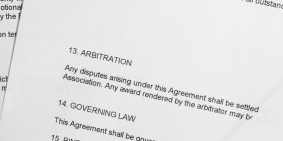In July of 2009, the City of Lancaster resorted to a unique plan in an effort to prevent the Mongols Nation Motorcycle Club, Inc., a California Corporation (“the Mongols”), from holding its annual convention in the City of Lancaster. In an effort to prevent the Mongols from staying in Lancaster that weekend, the mayor and others shut down the hotel where the Mongols had planned to stay, preventing anyone from entering the premises.
The Mongols sued the City claiming that Lancaster interfered with the exercise of civil rights and other causes of action. The City responded to the complaint with a demurrer and special motion to strike (SLAPP motion). After the Trial Court denied the special motion to strike, the City filed its appeal from the order denying the motion. (Mongols Nation Motorcycle Club, Inc., v. City of Lancaster (2012) 2012 DJDAR 10721.)
While the matter was on appeal, the Mongols filed a certificate of dissolution for the purpose of dissolving the corporation. The Court of Appeal took judicial notice of the certificate of dissolution, and, based upon the dissolution, ordered the Mongols’ action dismissed. The Court noted that under Corporations Code section 2010, a corporation which is dissolved nevertheless continues to exist for the purpose of winding up its affairs, prosecuting and defending actions by or against it, and disposing of and conveying its property, but not for the purpose of continuing business.
In this case, the Mongols filed the certificate of dissolution one week after the City served the Mongols with its opening brief. In dissolving, the Court found that the Mongols took an irreconcilable position by seeking to continue prosecution of its complaint, while avoiding the prospect of having to pay the City’s attorneys’ fees in the event there was a reversal by the Court of Appeal of the Trial Court’s denial of the special motion to strike.
While the decision in Mongols appears to be inconsistent with the provision in Corporations Code section 2010 which allows for the prosecution of actions following dissolution, the opinion can be read to stand for the proposition that a dissolution filed as a litigation tactic can override this provision and result in the dismissal of the pending litigation.
Disclaimer
Related Posts
March 6, 2012
Toyota Motor Corporation v. Superior Court – Corporate Person Most Qualified / Knowledgeable Depositions
Corporate employers with employees…
January 18, 2011
Right to Arbitrate May be Waived by Proceeding With a Lawsuit
The California Court of Appeal recently…




